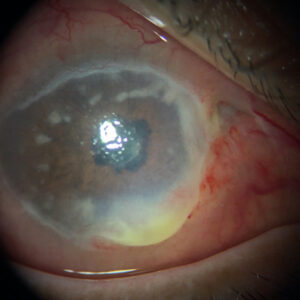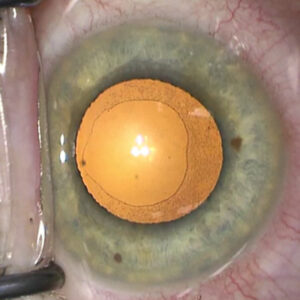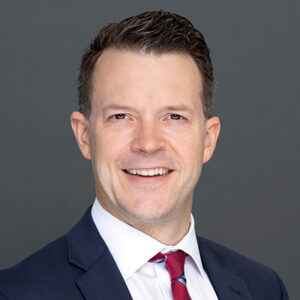ASCRS News: ASCRS/EyeWorld Journal Club
March 2021
by Alexa Thibodeau, MD, and Bradford Tannen, MD
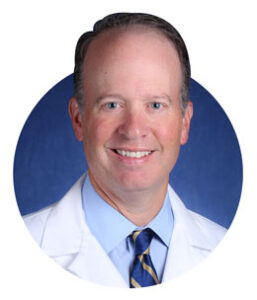
Residency Program Director
Kellogg Eye Center
University of Michigan
Ann Arbor, Michigan
Achieving competency in cataract surgery is an essential component of ophthalmology residency training. The Accreditation Council for Graduate Medical Education (ACGME) mandates that trainees perform at least 86 cataract surgeries during residency, with most residents surpassing this minimum.1 Between 2009 and 2015, the average number of phacoemulsification cases performed by residents as primary surgeon steadily rose from 144 to 174.2
Despite this increase in cataract surgical caseloads, the number of cases needed for a resident to achieve competency remains unknown. Identification of an optimal cataract surgical caseload is of particular interest for residency training programs; ophthalmic residency curriculum design must strike a balance between ensuring adequate cataract surgical volume to produce competent surgeons and facilitating other educational experiences to prepare residents for independent practice.
While most young ophthalmologists express confidence in their ability to perform unsupervised cataract surgery upon graduation, many think that their exposure to other important surgical techniques during residency is lacking.3 Surveys of young eye surgeons showed that the majority had never performed corneal relaxing incisions or laser vision correction.4 Fewer than half of respondents thought that they had received adequate training in capsular tension rings, and only 35% reported that they were somewhat or very comfortable with managing loose zonular fibers.5 A better understanding of the educational value of cataract surgery cases beyond the ACGME minimum may allow residency programs to provide a more balanced clinical and surgical experience by redistributing some of the additional time and resources currently devoted to teaching cataract surgery to other training opportunities. Liebman et al. offer insights into this challenging situation through their quantification of the resident cataract surgery learning curve and identification of the case threshold at which residents experience marginal educational benefit.
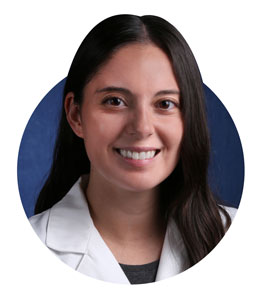
Resident
Kellogg Eye Center
University of Michigan
Ann Arbor, Michigan
Summary
This retrospective consecutive case series included cataract surgical cases performed by resident physicians as primary surgeon at a large U.S. residency training program (Massachusetts Eye and Ear). A total of 6,228 cases performed by 40 residents between July 1, 2010, and June 30, 2015, were eligible for study; of these, 2,096 cases (33.7%) had operative time data available and were analyzed. Cases for which operative time data was not available were maintained as placeholders to ensure accurate case number count. Of the analyzed cases, five were performed by PGY-2 residents, 324 by PGY-3 residents, and 1,709 by PGY-4 residents. Fifty-nine cases (2.8%) were excluded due to operative time that was two standard deviations longer than the mean (58 minutes). The authors chose to exclude these cases because the objective of the study was to measure baseline surgical performance in non-extenuating circumstances (i.e., intraoperative complications or unusually complex procedures).
Operative time was defined as the time elapsed between initial incision and final wound closure and was selected as a proxy for surgical competency due to its objective nature, ability to be easily measured and proven correlation with surgical proficiency.6–8 Mixed-effect linear regression models were used to evaluate changes in operative time as a function of sequential case number. The slope for the association was modeled as three consecutive splines with cut points at the 40th and 150th cases. The authors found a considerable, progressive decrease in operative time for case number one through 39 (mean change of –0.17 minutes per additional case, 95% CI –0.21, –0.12; p<0.001). A smaller but still significant reduction in operative time was identified for cases 40 through 149 (mean change of –0.05 minutes per additional case, 95% CI –0.07, –0.04; p<0.001). For cases 150 and beyond, there was no significant improvement in operative time.
To examine individual resident learning patterns, each resident’s operative time was mapped as a function of consecutive case number and modeled with best fit second-degree polynomial curves. The authors were able to identify three distinct resident learning “phenotypes.” One group of trainees demonstrated operative times indicative of early, above-average surgical performance with steady progress. A second group included residents with a slow start but rapid progress midway through their total caseload. Lastly, a smaller, third group of residents showed prolonged, inconsistent performance that continued beyond their 100th case.
Discussion
The authors make a valuable contribution to the literature by modeling the resident learning curve in cataract surgery in order to identify a case threshold beyond which trainees may expect diminishing educational return. The results of this study are congruent with prior research showing a benefit to performing a greater number of cataract surgeries than the ACGME-mandated minimum of 86 cases.6,7,9 The findings also correlate with those of other studies evaluating surgical efficiency and complication rate as a function of sequential case number. Randelman et al. found similar improvements in adjusted phacoemulsification time (total phacoemulsification time multiplied by phacoemulsification power) as surgical experience increased and identified a plateau in the rates of both posterior capsule tear and vitreous loss around a similar case threshold of 160.7
A significant limitation of this study is that operative time is not a perfect proxy for surgical proficiency; operative time may be influenced by case complexity, intraoperative complications, attending teaching style, and phacoemulsification technique (divide and conquer, stop and chop, phaco chop, etc.). While cases with operative time longer than two standard deviations above the mean were excluded to control for non-extenuating circumstances, the authors did not report any standardization with regard to nucleus density or phacoemulsification technique. Another limitation of this study was that operative time data was unavailable for nearly two-thirds of eligible cases. Even so, Liebman et al.’s analysis of more than 2,000 cases from 40 residents during a 5-year academic period serves as one of the largest studies ever to assess the resident cataract surgery learning curve.6,10 A final limitation of this study is that data was limited to cataract cases by residents of a single residency program. Thus, the results may not be generalizable to residents at training programs with a different structure and approach to teaching cataract surgery.
Overall, this study supports creation of personalized cataract surgery caseloads based upon resident operative performance and learning phenotype. This individualized approach, the authors suggested, may optimize each resident’s limited time in training by devoting adequate time to achieve proficiency in cataract surgery without sacrificing other opportunities for professional growth. Further research is essential to assess the external validity of such findings across a diverse range of residency programs and to determine predictors of surgical performance so that residents who may benefit from early additional guidance may be recognized.
Quantifying the educational benefit of additional cataract surgery cases in ophthalmology residency
Daniel Liebman, MD, K. Matthew McKay, MD, Miriam Haviland, PhD, Giannis Moustafa, MD, Durga Borkar, MD, Carolyn Kloek, MD
J Cataract Refract Surg. 2020;46(11):1495–1500.
- Purpose: To quantify the resident learning curve for cataract surgery using operative time as an indicator of surgical competency, to identify the case threshold at which marginal additional educational benefit became equivocal, and to characterize heterogeneity in residents’ pathways to surgical competency.
- Setting: Academic Medical Center.
- Design: Large-scale retrospective consecutive case series.
- Methods: All cataract surgery cases performed by resident physicians as primary surgeon at Massachusetts Eye and Ear from July 1, 2010 through June 30, 2015 were reviewed. Data was abstracted from ACGME case logs and operative time measurements. A linear mixed-methods analysis was conducted to model changes in residents’ cataract surgery operative times as a function of sequential case number, with resident identity included as a random effect in the model to normalize between-resident variability.
- Results: A total of 2,096 cases were analyzed. A marked progressive decrease in operative time was noted for resident cases 1–39 (mean change –0.17 minutes per additional case, 95% CI –0.21, –0.12; p<.001). A modest, steady reduction in operative time was subsequently noted for case numbers 40–149 (mean change –0.05 minutes per additional case, 95% CI –0.07, –0.04; p<0.001). We found no statistically significant improvement in operative times beyond the 150th case.
- Conclusion: Residents derive educational benefit from performing a greater number of cataract procedures than current minimum requirements. However, cases far in excess of this threshold may have diminishing educational return in residency. Educational resources currently employed for these cases may be more appropriately devoted to other training priorities.
ARTICLE SIDEBAR
The ASCRS Journal Club is a virtual, complimentary CME offering exclusive to ASCRS members that brings the experience of a lively discussion of two current articles from the Journal of Cataract & Refractive Surgery to the viewer. Co-moderated by Nick Mamalis, MD, and Leela Raju, MD, the December session, the inaugural session, featured a presentation by Samuel Masket, MD, lead author of “Surgical management of positive dysphotopsia: US perspective.” The second manuscript, “Quantifying the benefit of additional cataract surgery cases in ophthalmology residency,” was presented by Alexa Thibodeau, MD, resident, Kellogg Eye Center, University of Michigan. To view the December Journal Club session, visit: https://ascrs.org/clinical-education/journal-club/schedule/december-2020.
References
- ACGME Case Log Information: Ophthalmology; Review Committee for Ophthalmology. www.acgme.org/Portals/0/PFAssets/ProgramResources/OPH_CaseLogInfo.pdf?ver=2021-01-28-153137-763. Accessed January 14, 2021.
- Chadha N, et al. Trends in ophthalmology resident surgical experience from 2009 to 2015. Clin Ophthalmol. 2016;10:1205–1208.
- Abdelfattah NS, et al. Perspective of ophthalmology residents in the United States about residency programs and competency in relation to the International Council of Ophthalmology guidelines. J Curr Ophthalmol. 2016;28:146–151.
- Yeu E, et al. Resident surgical experience with lens and corneal refractive surgery: survey of the ASCRS Young Physicians and Residents Membership. J Cataract Refract Surg. 2013;39:279–284.
- Schallhorn JM, et al. Resident and young physician experience with complex cataract surgery and new cataract and refractive technology: Results of the ASCRS 2016 Young Eye Surgeons survey. J Cataract Refract Surg. 2017;43:687–694.
- Wiggins MN, Warner DB. Resident physician operative times during cataract surgery. Ophthalmic Surg Lasers Imaging. 2010;41:518–522.
- Randleman JB, et al. The resident surgeon phacoemulsification learning curve. Arch Ophthalmol. 2007;125:1215–1219.
- Taravella MJ, et al. Characterizing the learning curve in phacoemulsification. J Cataract Refract Surg. 2011;37:1069–1075.
- Ho J, Claoué C. Cataract skills: how do we judge competency? J R Soc Med. 2013;106:2–4.
- Hosler MR, et al. Impact of resident participation in cataract surgery on operative time and cost. Ophthalmology. 2012;119:95–98.
Contact
Tannen: btannen@med.umich.edu
Thibodeau: althibod@med.umich.edu

